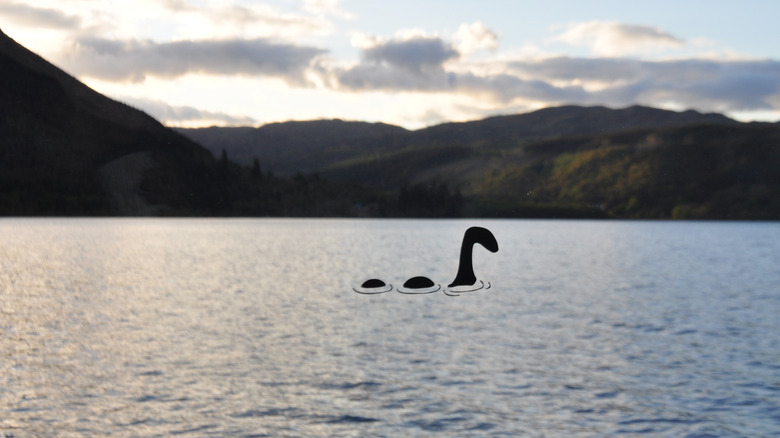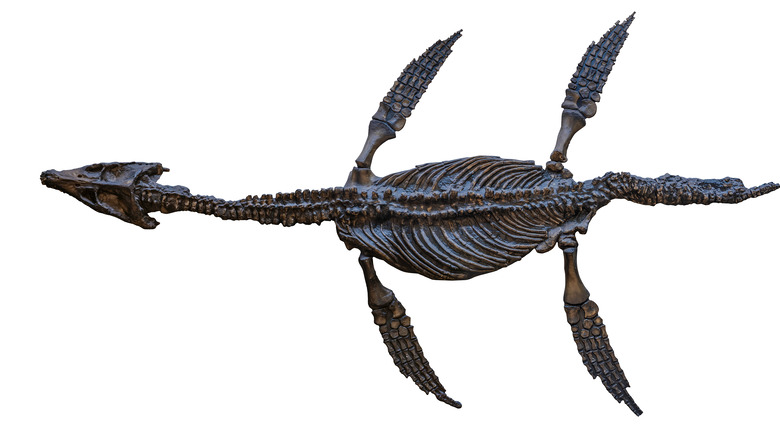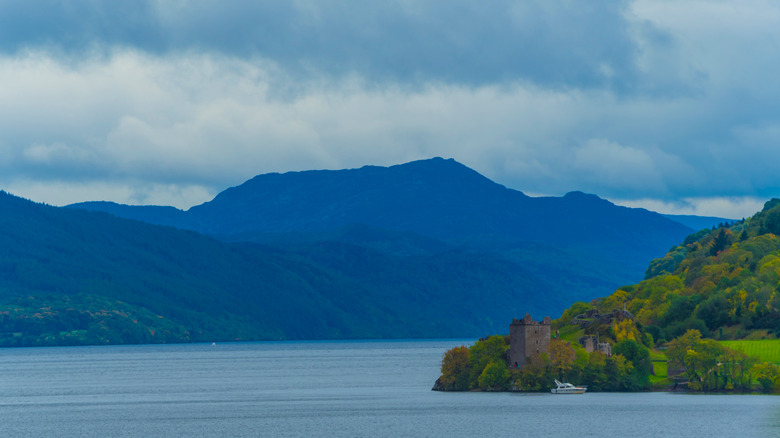Scientists Might Be Changing Their Tune About The Loch Ness Monster's Existence
According to PBS, the legend of the Loch Ness Monster, which is said to live in Loch Ness, Scotland, dates back to ancient times. In fact, National Geographic reports that the first possible sighting occurred back in the year 564 by an Irish priest named Columba. However, History explains that this mythological beast's modern tale was perpetuated in 1933 when a couple told a local paper, the "Inverness Courier," that they had spotted something unbelievable. They recounted witnessing "an enormous animal rolling and plunging on the surface" (via PBS). Since then, the public has gone wild searching for this alleged monster.
Nevertheless, the question remains: Is the Loch Ness Monster fact or fiction? Vox describes that efforts to prove its existence have been fruitless. Sightings have been untrustworthy and there has been little scientific backing. Donald R. Prothero, a paleontologist and geologist, noted "The bigger issue is that the biological, geological, and physical evidence is against the thing existing." Despite this, the Washington Post writes, many believe that Nessie is actually a plesiosaur. Per The Conversation, this theory arose after a witness, George Spicer, described seeing a reptile-like creature with a long neck. Vox notes that cryptozoologists wholeheartedly agree with this argument and now scientists might too (per The Independent).
What is a plesiosaur?
Thought Co. describes plesiosaurs as marine reptiles with small heads, long necks, and large flippers. According to Britannica, they could be found in European seas and the Pacific Ocean before going extinct around 66 million years ago (via The Conversation). The Independent writes that the first plesiosaur fossil was discovered back in 1823 by Mary Anning in Lyme Regis, Dorset. Vox explains that Nessie enthusiasts believe that the monster is a plesiosaur that somehow survived extinction. Prothero debunked this theory by saying "We have an incredibly good fossil record of animals and never once has there been a plesiosaur bone found in the lake."
In 2019, the BBC reported that researchers believed that the Loch Ness Monster was not a plesiosaur but actually a giant eel. They noted that DNA testing had yielded 0 results regarding the presence of plesiosaur DNA in Loch Ness. Relevant Magazine states that there is another issue regarding the theory that the Loch Ness Monster is a plesiosaur. The publication notes that plesiosaurs were believed to have strictly survived in salt-water conditions. Loch Ness, per Britannica, is a fresh body of water. However, Newsweek explains that a recent discovery in a former ancient river has changed everything.
The new theory regarding plesiosaurs
The Independent reports the researchers found the fossils of a plesiosaur in what used to be an ancient river in the Sahara Desert in Morocco. Now, scientists from the University of Bath, the University of Portsmouth in the U.K., and Université Hassan II in Morocco have surmised that plesiosaurs may have also lived in fresh bodies of water (via Newsweek). Per Relevant Magazine, this means they may have eaten other freshwater creatures, like turtles and frogs. Their findings, which were published in the Cretaceous Research journal, have come to the conclusion that the existence of the Loch Ness Monster is "plausible."
In other words, plesiosaurs could have very well lived and survived in Loch Ness (per Newsweek). Interestingly, the Mirror reports that Dr. Nick Longrich, one of the study's authors, stated that "We don't really know why the plesiosaurs are in freshwater." He added "It's a bit controversial, but who's to say that because we paleontologists have always called them 'marine reptiles', they had to live in the sea? Lots of marine lineages invaded freshwater."
That being said, not everyone is thrilled with this discovery. IFLScience states that it perpetuates the notion that the Loch Ness Monster still exists. If it was a plesiosaur, then it went extinct long ago. There is also nothing to support the theory that it could have survived in Loch Ness after extinction.


